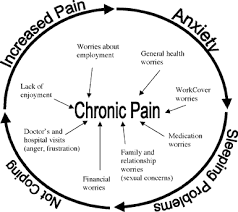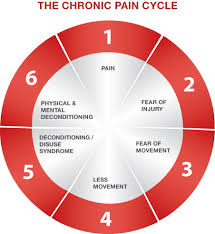What is Acupuncture?
Acupuncture is an ancient form of Chinese medicine involving the insertion of solid filiform acupuncture needles into the skin at specific points on the body to achieve a therapeutic effect. No drug is injected. The needles alone create the beneficial effects of acupuncture.
Although millions of Americans use acupuncture each year, often for chronic pain, there has been considerable controversy surrounding its value as a therapy and whether it is anything more than placebo. Research exploring a number of possible mechanisms for acupuncture’s pain-relieving effects is ongoing.
People use acupuncture for various types of pain. Back pain is the most commonly reported use, followed by joint pain, neck pain, and headache.
Acupuncture is being studied for its efficacy in alleviating many kinds of pain. There are promising findings in some conditions, such as chronic low-back pain and osteoarthritis of the knee; but, for most other conditions, additional research is needed. The National Center for Complementary and Alternative Medicine (NCCAM) sponsors a wide range of acupuncture research.
Acupuncture is generally considered safe when performed correctly
In traditional Chinese medicine whole medical system that originated in China. It is based on the concept that disease results from disruption in the flow of qi and imbalance in the forces of yin and yang. Practices such as herbs, meditation, massage, and acupuncture seek to aid healing by restoring the yin-yang balance and the flow of qi theory, acupuncture regulates the flow of qiIn traditional Chinese medicine, the vital energy or life force proposed to regulate a person's spiritual, emotional, mental, and physical health and to be influenced by the opposing forces of yin and yang. (vital energy) through the body. Research to test scientific theories about how acupuncture might work to relieve pain is under way.

Tell all your health care providers about any complementary and alternative practices you use. Give them a full picture of what you do to manage your health. This will help ensure coordinated and safe care. For tips about talking with your health care providers about complementary and alternative medicine (CAM
What is Chronic Pain?

While acute pain is a normal sensation triggered in the nervous system to alert you to possible injury and the need to take care of yourself, chronic pain is different. Chronic pain persists. Pain signals keep firing in the nervous system for weeks, months, even years. There may have been an initial mishap -- sprained back, serious infection, or there may be an ongoing cause of pain -- arthritis, cancer, ear infection, but some people suffer chronic pain in the absence of any past injury or evidence of body damage. Many chronic pain conditions affect older adults. Common chronic pain complaints include headache, low back pain, cancer pain, arthritis pain, neurogenic pain (pain resulting from damage to the peripheral nerves or to the central nervous system itself), psychogenic pain (pain not due to past disease or injury or any visible sign of damage inside or outside the nervous system). A person may have two or more co-existing chronic pain conditions. Such conditions can include chronic fatigue syndrome, endometriosis, fibromyalgia, inflammatory bowel disease, interstitial cystitis, temporomandibular joint dysfunction, and vulvodynia. It is not known whether these disorders share a common cause.

Is there any treatment?
Medications, acupuncture, local electrical stimulation, and brain stimulation, as well as surgery, are some treatments for chronic pain. Some physicians use placebos, which in some cases has resulted in a lessening or elimination of pain. Psychotherapy, relaxation and medication therapies, biofeedback, and behavior modification may also be employed to treat chronic pain.

What is the prognosis?
Many people with chronic pain can be helped if they understand all the causes of pain and the many and varied steps that can be taken to undo what chronic pain has done. Scientists believe that advances in neuroscience will lead to more and better treatments for chronic pain in the years to come.
There have been a mind-numbing number of reviews of the acupuncture research in recent years, many of which have reported conflicting conclusions about the effectiveness of this approach. To understand why a new review merits our attention, stories should try to articulate how its methods differ from previous research. Otherwise, there’s no way to tell if the conclusions are more believable than what we’ve already heard.
Interestingly, the two stories we reviewed demonstrated “the glass half full/half empty” phenomenon, at least in the story headlines. The Reuters story noting “limited benefit” and USA Today noting “Acupuncture works.” Clearly the study provided a very mixed
The story puts the benefits in terms readers can understand and that accurately reflects the magnitude of the benefit: “…about 50 percent of patients had their symptoms cut in half with acupuncture, compared to almost 43 percent of those treated with sham acupuncture and 30 percent with no acupuncture-like therapy.”
New Research- Acupuncture has limited benefit for chronic pain
A recent NCCAM-funded study, employing individual patient data meta-analyses and published in the Archives of Internal Medicine, provides the most rigorous evidence to date that acupuncture may be helpful for chronic pain. In addition, results from the study provide robust evidence that the effects of acupuncture on pain are attributable to two components.

The larger component includes factors such as the patient’s belief that treatment will be effective, as well as placebo and other context effects. A smaller acupuncture-specific component involves such issues as the locations of specific needling points or depth of needling.
Although millions of Americans use acupuncture each year, often for chronic pain, there has been considerable controversy surrounding its value as a therapy and whether it is anything more than an elaborate placebo. Research exploring a number of possible mechanisms for acupuncture’s pain-relieving effects is ongoing. Researchers from the Acupuncture Trialists’ Collaboration, a group that was established to synthesize data from high-quality randomized trials on acupuncture for chronic pain, conducted an analysis of individual patient data from 29 high-quality randomized controlled trials, including a total of 17,922 people. These trials investigated the use of acupuncture for back and neck pain, osteoarthritis, shoulder pain, or chronic headache. For all pain types studied, the researchers found modest but statistically significant differences between acupuncture versus simulated acupuncture approaches (i.e., specific effects), and larger differences between acupuncture versus a no-acupuncture controls (i.e., non-specific effects). (In traditional acupuncture, needles are inserted at specific points on the body. Simulated acupuncture includes a variety of approaches which mimic this procedure; some approaches do not pierce the skin or use specific points on the body.) The sizes of the effects were generally similar across all pain conditions studied. The authors noted that these findings suggest that the total effects of acupuncture, as experienced by patients in clinical practice, are clinically relevant. They also noted that their study provides the most robust evidence to date that acupuncture is more than just placebo and a reasonable referral option for patients with chronic pain.

(Source- Archives of Internal Medicine)
No comments:
Post a Comment